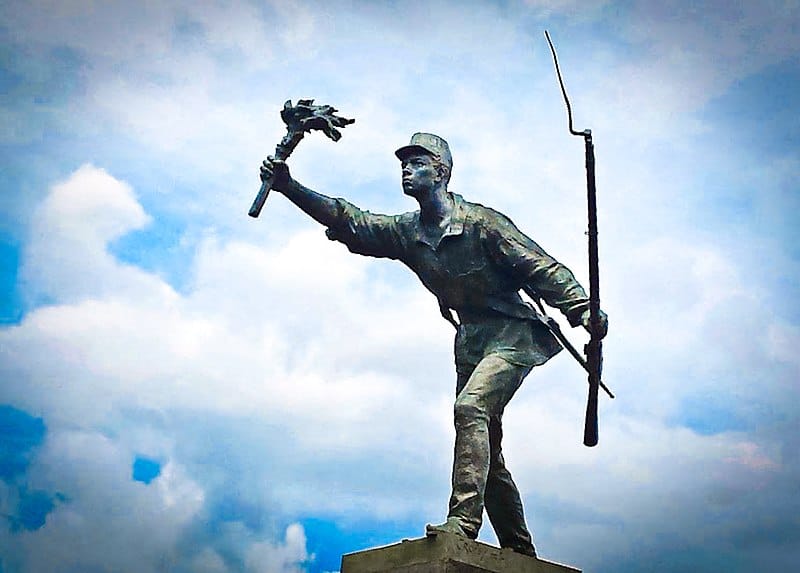Juan Santamaría. You’ve flown into his airport, driven past his park and likely encountered dozens of statues bearing his likeness, but how much do you know about the man hailed as Costa Rica’s national hero? Not much information is available on the young soldier Costa Ricans hail as a national hero, and what does exist is often sketchy at best.
“In reality there is very little known about Juan Santamaría,” said Antonio Vargas, a historian with the JuanSantamaríaMuseum. In fact, an application by his mother for a pension and a handful of other documents provide the only information on him that exist, he added. “The problem is that some people have used documentation regarding another soldier who died, also named Juan Santamaría,” said Vargas about varying accounts on Santamaría’s life.
What is known, according to documents from the JuanSantamaríaMuseum in Alajuela, northwest of San José, is that Santamaría was born on August 29, 1831 to Manuela Carbajal in Alajuela. He grew up poor, working from the time he was very young until he joined the militia. It was there he mounted to protect Costa Rica’s freedom from outside attackers in 1856 and entered the history books.
Although no pictures of him exist, it is generally accepted that he was of mixed Latin American and African descent. He was nicknamed Hedgehog, many say because of his wild hair. However, as far as history is concerned, all details of his life before April 11, 1856 are superfluous.
In the mid-1850s, a U.S.man named William Walker, after failing at several careers in the United States, began a crusade to take possession of Central America, enslave its people and turn the land over to the Southern Confederacy. After gaining control of Nicaragua in 1855, Walker planned to move south to Costa Rica and mobilize his army to enter Guanacaste.
Receiving word of Walker’s plans from Washington, D.C., Costa Rica President Juan Rafael Mora gathered several thousand men and headed to the northern province to prevent Walker from advancing. Despite lacking arms, the Costa Ricans drove Walker’s men up into a Nicaraguan town called Rivas, where the one of the most famous battles in Costa Rican history would take place.
On April 11, Walker’s troops took cover in the Mesón de Guerra building. After several hours of fighting, it became evident that the Costa Rican army was not going to be able to dispel Walker’s men from the building, so General José María Cañas ordered it burned.
After two men failed, a third by the name of Juan Santamaría volunteered for the mission that would turn him into a national hero. Dramatic accounts depict a young soldier with a torch rushing the building as bullets riddled his body, and throwing the torch to ignite the Mesón as he fell to the ground. Other accounts are less action-packed, but, in the end, the building burned and Walker’s men fled.
Word spread quickly of the Alajuela soldier who gave his life to expel the U.S. invaders and save Costa Rica. Over the following decades, the story grew and legend was born. In 1891, the Municipality of Alajuela officially recognized the actions of Santamaría.

